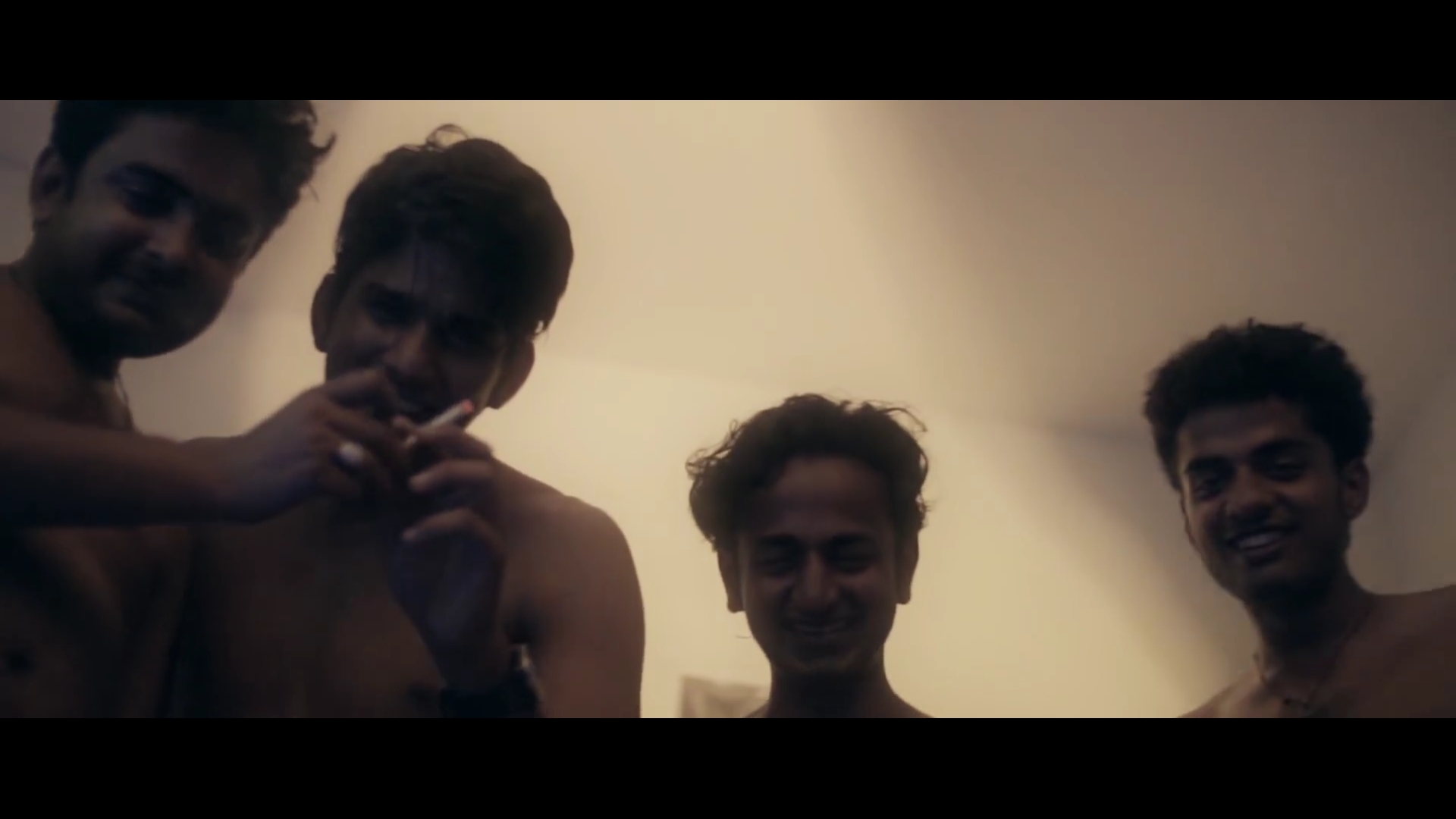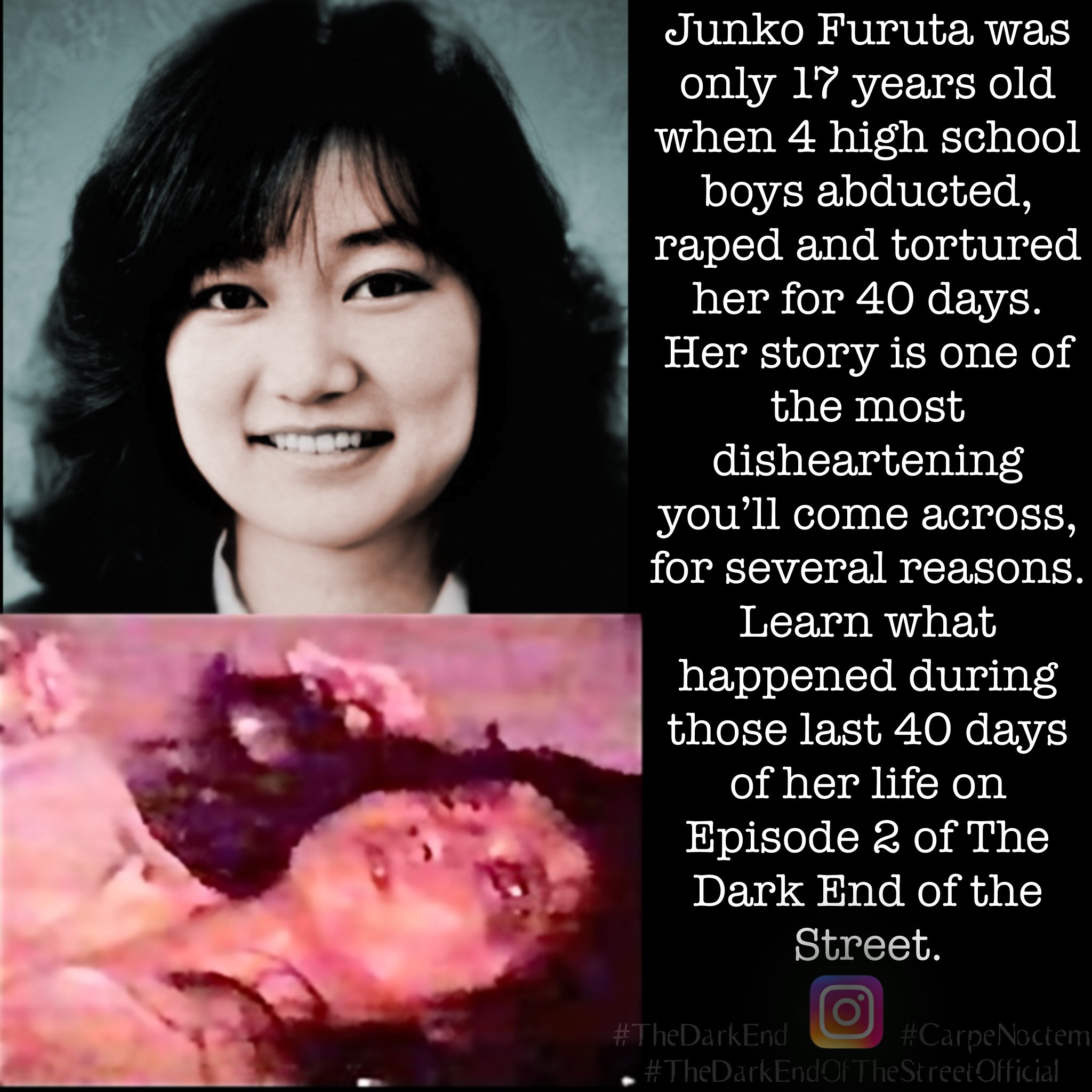The tragic story of Junko Furuta remains one of the darkest chapters in Japanese criminal history. Her case continues to resonate globally, symbolizing the horrors of extreme violence and the complexities of justice. This article delves deep into the life, tragedy, and legacy of Junko Furuta, providing comprehensive insights into her story and its implications.
Junko Furuta's case shocked Japan and the world when it came to light in the late 1980s. The events surrounding her abduction, torture, and murder remain some of the most heinous crimes ever committed. Understanding her story is crucial to comprehending the darker aspects of human nature and the importance of justice systems.
This article explores every significant aspect of Junko Furuta's life and death, including the historical context, the perpetrators, legal proceedings, and societal impacts. By analyzing this case, we aim to provide readers with a thorough understanding of the events and their consequences while emphasizing the importance of preventing such tragedies.
Read also:Richard Dean A Detailed Exploration Into The Life Career And Achievements
Table of Contents
- Biography of Junko Furuta
- Overview of the Junko Furuta Case
- The Perpetrators
- Legal Proceedings
- Psychological Impact on Society
- Media Coverage and Public Reaction
- Analysis of the Japanese Justice System
- Lessons Learned from the Case
- Legacy and Long-Term Effects
- Conclusion
Biography of Junko Furuta
Early Life and Background
Junko Furuta was born on January 31, 1971, in Tokyo, Japan. She grew up in a typical Japanese family, attending school and participating in various extracurricular activities. Her early life seemed unremarkable, with no signs of the tragedy that would later unfold. Below is a summary of her personal details:
| Full Name | Junko Furuta |
|---|---|
| Date of Birth | January 31, 1971 |
| Place of Birth | Tokyo, Japan |
| Occupation | High School Student |
Her life took a tragic turn in November 1988 when she was abducted by a group of teenage boys. This event marked the beginning of a horrifying ordeal that would capture national and international attention.
Overview of the Junko Furuta Case
The Junko Furuta case began on November 25, 1988, when the 17-year-old high school student was abducted by four teenage boys. The perpetrators held her captive for 44 days, during which they subjected her to extreme physical and psychological abuse. The case gained widespread attention due to its brutality and the age of the perpetrators.
Data from Japanese crime statistics indicate a rise in violent crimes involving minors during the late 1980s, raising concerns about youth delinquency and the effectiveness of the justice system. According to a report by the Japanese Ministry of Justice, the number of juvenile offenders increased significantly during this period, highlighting the need for stricter measures.
The Perpetrators
Who Were They?
The four perpetrators involved in the abduction and murder of Junko Furuta were all minors at the time of the crime. They included:
- Kazuyoshi Miura: The ringleader who orchestrated the abduction.
- Takumi Matsui: One of the main perpetrators who participated actively in the abuse.
- Hiroshi Takahashi: Another accomplice who played a key role in the crime.
- Minoru Miyazaki: The youngest of the group, who also contributed to the abuse.
Psychological evaluations conducted on the perpetrators revealed significant personality disorders and a lack of empathy. Studies published in the Journal of Forensic Psychology suggest that such behaviors often stem from a combination of environmental factors and personal vulnerabilities.
Read also:Girthmaster With Miaz Videos Exploring The World Of Fitness And Transformation
Legal Proceedings
Trial and Sentencing
The trial of the four perpetrators began in 1989, capturing the attention of the nation. Due to their ages, the boys were tried in juvenile court, which limited the severity of their sentences. The court ultimately sentenced:
- Kazuyoshi Miura to life imprisonment.
- Takumi Matsui to 15 years in prison.
- Hiroshi Takahashi to 12 years in prison.
- Minoru Miyazaki to 10 years in prison.
Legal experts argue that the sentences were insufficient given the severity of the crimes. A report by the United Nations Office on Drugs and Crime highlights the challenges of balancing juvenile justice with public safety.
Psychological Impact on Society
Effects on the Japanese Public
The Junko Furuta case had a profound psychological impact on Japanese society. It sparked widespread fear and concern about the safety of young people, particularly girls. Surveys conducted by the Japanese National Police Agency revealed an increase in parental anxiety and calls for stricter laws.
Experts suggest that such cases can lead to long-term societal changes, including increased awareness of domestic violence and child protection. Organizations like the Japan Child Abuse Prevention Network have since been established to address these issues.
Media Coverage and Public Reaction
Role of the Media
Media coverage of the Junko Furuta case was extensive, with newspapers, television, and radio stations providing daily updates. The media played a crucial role in informing the public but also faced criticism for sensationalizing the story. Ethical guidelines for reporting on sensitive cases have since been developed to address these concerns.
Public reaction was overwhelmingly sympathetic toward Junko Furuta and her family. Vigils and memorials were organized across Japan, demonstrating the nation's solidarity and grief.
Analysis of the Japanese Justice System
Strengths and Weaknesses
The Japanese justice system faced significant scrutiny following the Junko Furuta case. While praised for its focus on rehabilitation, critics argue that it fails to adequately address severe crimes committed by minors. Comparative studies published in the Harvard Law Review highlight the need for reforms in juvenile justice systems worldwide.
Reforms implemented in the wake of the case include stricter penalties for juvenile offenders and increased support for victims' families. These changes aim to strike a balance between justice and compassion.
Lessons Learned from the Case
Preventing Future Tragedies
The Junko Furuta case serves as a stark reminder of the importance of preventing violent crimes and protecting vulnerable populations. Key lessons include:
- Enhancing education and awareness programs about violence and abuse.
- Improving the effectiveness of juvenile justice systems.
- Encouraging community involvement in child protection efforts.
Research published in the Journal of Criminal Justice supports these strategies, emphasizing the role of education and community engagement in reducing crime rates.
Legacy and Long-Term Effects
Remembering Junko Furuta
Junko Furuta's legacy continues to influence discussions about justice, human rights, and societal responsibility. Memorials and educational initiatives have been established in her honor, ensuring that her story is not forgotten. The case remains a critical case study in criminology and legal studies.
Her story also highlights the importance of resilience and hope in the face of adversity. Organizations worldwide continue to advocate for victims' rights and the prevention of violence.
Conclusion
The tragic story of Junko Furuta serves as a powerful reminder of the need for vigilance, justice, and compassion. By understanding the events and their implications, we can work toward a safer and more just society. We encourage readers to share this article, engage in discussions, and support initiatives aimed at preventing similar tragedies in the future.
For further reading, explore related articles on our website that delve into topics such as criminal justice reform, victim support, and societal change. Together, we can make a difference and honor Junko Furuta's memory by striving for a better world.



